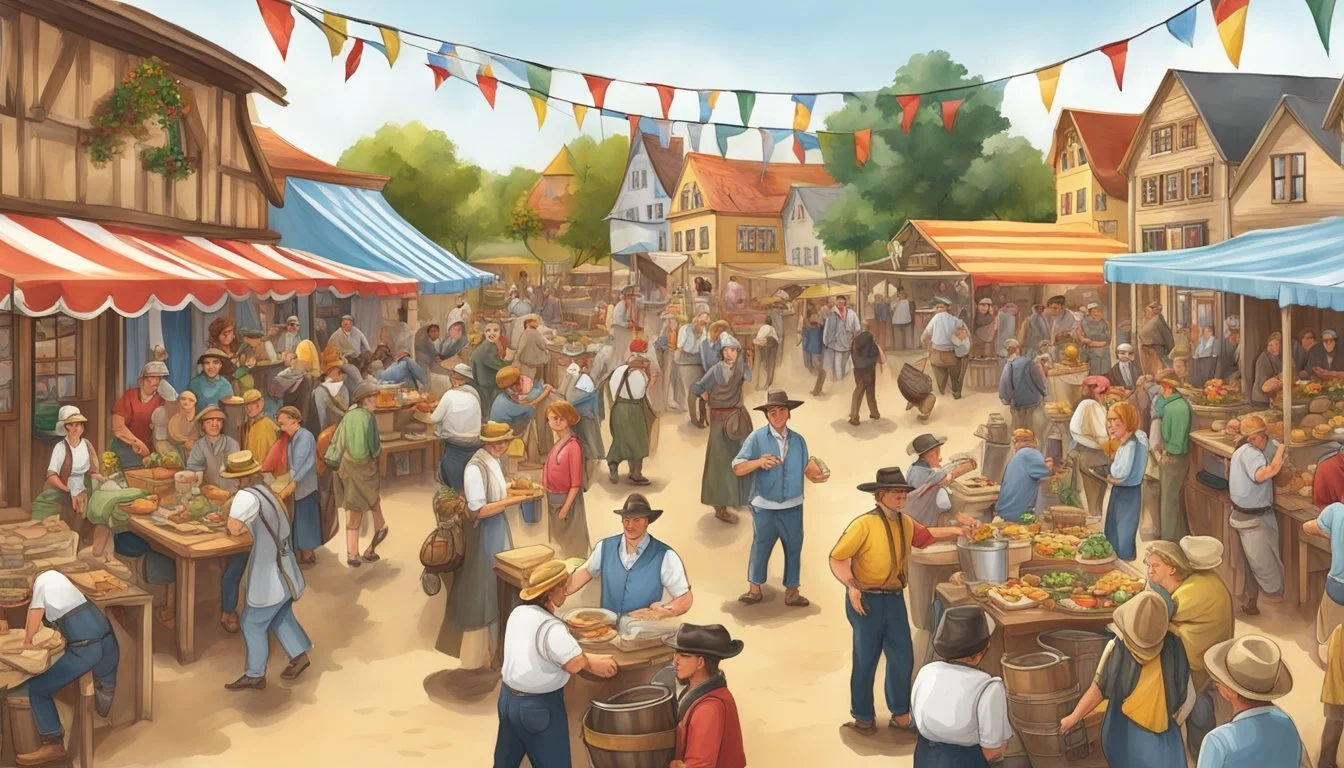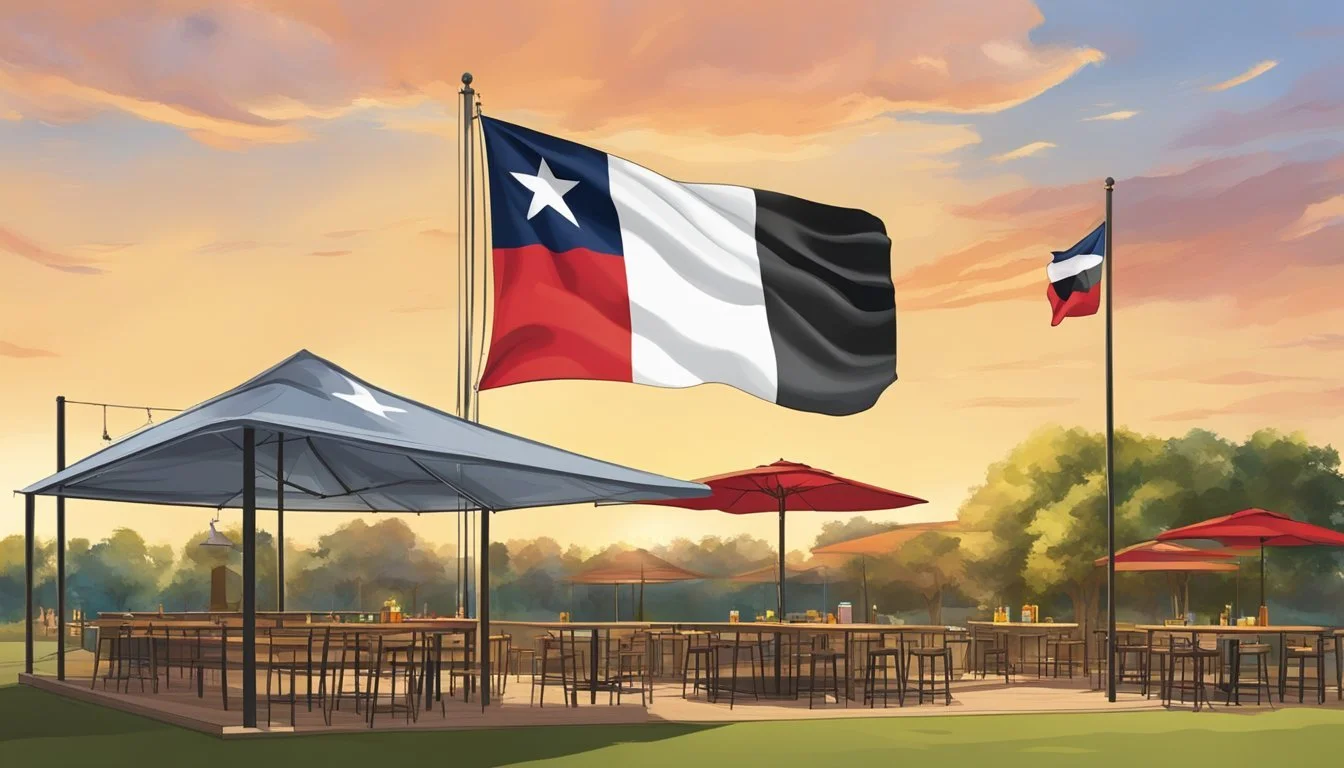The Enduring Impact of German Culture on Texas Identity and Heritage
A Cultural Legacy Revealed
The cultural landscape of Texas is a tapestry woven from the threads of many traditions, of which German heritage is particularly prominent. Since the mid-19th century, when German settlers founded towns like Fredericksburg and New Braunfels in Texas Hill Country, their influence has been inextricable from the state's identity. These early German Texans introduced their language, customs, and festivities to the region, integrating their traditions with the local Texan way of life to forge a unique cultural identity.
German impact on Texas culture extends far beyond these historical settlements. Across Central Texas and into Austin, the mark of German immigrants' culture is evident in numerous facets of daily life, including architecture, education, and cuisine. From Oktoberfest celebrations to the popularity of foods such as sausages, schnitzels, and strudels, German traditions have been embraced across the state. Polka music and traditional dances, too, have become part of Texas's cultural celebrations, underscoring the deep fusion of German heritage within Texan society.
Even as demographic changes have occurred over time, the German influence remains a vital component of the Texas identity. German Texans have contributed significantly to the state's development, leaving an enduring legacy reflected in the arts, businesses, and community life. Their presence, historically significant, continues to be felt and celebrated, affirming the German roots within Texas's diverse and rich cultural tapestry.
The Roots of German Influence in Texas
The German influence in Texas began in the early 19th century with the establishment of significant settlements. These early communities laid the groundwork for a cultural legacy that endures to this day.
Initial German Settlements
The first German settlers in Texas arrived in the 1830s, with Friedrich Ernst being a notable pioneer. He established a homestead in Austin County, which became a magnet for other German immigrants. The Adelsverein, also known as the German Emigration Company, facilitated a more organized migration, founding towns such as New Braunfels and Fredericksburg in the 1840s. These settlements became part of an area known as the German Belt, spanning a region that includes modern-day cities like Austin and San Antonio.
Prominent Figures in Texas-German History
Prince Carl of Solms-Braunfels and John O. Meusebach were key leaders in the establishment of German settlements in Texas. Prince Carl oversaw the initial development of New Braunfels, and Meusebach succeeded him, founding Fredericksburg and negotiating peace with the Comanche, which helped to secure the area for German settlers. Johann Friedrich Ernst, commonly known as the "Father of German Immigration to Texas," helped kindle German migration through letters home extolling the virtues of Texas.
German Immigration Waves
German immigration to Texas occurred in waves, with the peak arriving in the 1850s. Nearly 20,000 Germans had settled in Texas by the end of that decade, and after the Civil War, the numbers grew even more. Immigrants entered through ports like Galveston and spread into the Hill Country and beyond. Various factors, including political unrest in Germany and the lure of economic opportunities, contributed to the substantial German migration. The influence of German culture remains pronounced in counties like Gillespie, where German heritage is a point of pride.
Cultural Manifestations of German Heritage
German heritage in Texas has influenced various aspects of cultural expression, permeating language, architecture, cuisine, and more, to create a distinctive Texan-German identity.
Linguistic Contributions
The German language persists in the Lone Star State through names of towns and colloquialisms within communities, enduring as a testament to Texas's rich immigrant tapestry. From Fredericksburg to New Braunfels, German linguistic roots remain evident.
Architectural Styles
Texas showcases German influence in its buildings, with the notable Fachwerk or half-timbered houses bearing witness to German craftsmanship. These structures, alongside historic dance halls and breweries, echo the architectural norms of Bavaria and exemplify the German commitment to durability and design.
German-Texan Cuisine
Cuisine is a flavorful affair where German succulence meets Texan gusto, giving rise to unique culinary staples such as schnitzel and strudel. Meats, especially sausages and pretzels, stand as icons of this fusion, often accompanied by a diverse array of locally brewed German-style beers.
Music and Dance Traditions
Polka music and dance, buoyed by the robust sounds of the accordion, hold a treasured place in Texan festivities. German-Texan communities celebrate through these vibrant traditions, preserving the lively essence of their shared musical heritage.
Festivities and Celebrations
Texas is renowned for its vibrant festivals that honor German traditions, most notably Oktoberfest and Wurstfest. These annual celebrations showcase a slew of customs, from beer and pie to dance and music, epitomizing the joyous spirit of German-Texan culture.
Integrating and Preserving German Heritage
As Texas continues to acknowledge its diverse cultural tapestry, the state remains particularly attuned to safeguarding its German roots. Efforts in preservation and integration of German heritage showcase a respect for historical influences amidst modern evolution.
Cultural Preservation Efforts
Preservation of communities and their identities in Texas involves both public and private entities working in coordination. For instance, the Sophienburg Museum in New Braunfels remains a testament to the state's German-American history, cataloging the journey of German immigrants and their settlement. Similarly, the Gruene Historic District is a vibrant symbol of these preservation attempts, maintaining a spot on the National Register and continuing to foster local German Texan culture.
Government initiatives have seen significant investments in preservation, with support for over 2,860 projects globally, including efforts in Texas. Texas state partners with various societies to preserve historical landmarks and settlements that display the blend of German and Texas heritage. This includes the Landmark Inn State Historic Site in Castroville and the Pioneer Museum in Fredericksburg, which protect similar historical structures and narratives of the early pioneering days.
German Influence on Local Industries
The German influence on industry has been manifold, particularly in agriculture and brewing, which saw an introduction of improved farming techniques and unique recipes that remain influential to this day. The impact is evident in the continued prominence of German-style sausages in Texan cuisine and the state's robust craft beer scene, which owes much its brewing techniques to German traditions.
Local industries also inherited German manufacturing skills and precision, especially in craftsmanship such as furniture making. The early German settlers' influence on trade and livestock management also carved significant developments in the region, complementing the state's existing agricultural prowess.
Educational and Historical Institutions
Historical and educational institutions are critical in imparting the importance of German heritage to both locals and visitors. The Pioneer Museum and the Sophienburg Museum have taken on the mantle of showcasing German immigrant stories, displaying artifacts, and detailing the evolution of their societal impact.
The preservation efforts also extend to fostering local customs, through support of educational programs that teach not just the history but also encourage the practice of German-Texan traditions, such as polka music, dance, and the German language. This educational commitment ensures that the unique union of German and Texas cultural identity endures for future generations to reference and celebrate.
Contemporary Reflections of German Impact
Texas harbors a rich tapestry of cultural influences, among which German heritage continues to be a vibrant and influential thread. Its presence is felt through established communities, traditional festivities, and contributions to the state's identity on the global stage.
Modern Communities of German Descent
In Texas, a number of towns—such as New Braunfels, Fredericksburg, and Boerne—reflect the ongoing influence of the German settlers who established communities in the Texas Hill Country. German language newspapers and architectural styles bear witness to the lasting German presence. Today, these communities continue to celebrate their heritage, maintain customs, and attract descendants of German ancestry, fostering a sense of identity deeply intertwined with German roots.
German Culture in Texas Festivals
Annual festivals like Oktoberfest and Wurstfest encapsulate the jubilant spirit of German culture in Texas. These events, which celebrate traditional German food, music, and dance, not only serve as reminders of historic customs but also reinforce the Texan-German identity. In cities like San Antonio and Austin, these festivals attract large crowds, including those without German heritage, illustrating the widespread appeal and integration of German traditions in Texas society.
Influence on Texas's Global Identity
The German impact extends beyond local communities and festivals to influence Texas's identity on a global scale. Cultural partnerships and twin-city relationships with German towns have been nurtured over decades, highlighting a legacy that transcends borders. The presence of German culture in Texas contributes to the state's image as a melting pot of global cultures, showcasing a unique blend that includes, but is not limited to, German elements. This fusion helps to define Texan identity in the context of an interconnected world.
Conclusion
Texas, a state rich in cultural diversity, has a distinct and prominent German influence that echoes through its identity and heritage. German culture, woven into the Texan fabric, manifests in several tangible ways. Communities such as Fredericksburg and New Braunfels are living testaments to the German heritage that contributes to the Texas culture.
Traditions: Festivals like Wurstfest and Oktoberfest celebrate German customs, featuring music, dance, and traditional foods.
Architecture: The construction of buildings featuring fachwerk and pioneer-style homes aligns with historical German designs.
Cuisine: The popularity of dishes such as sausages, schnitzels, and strudels—integrated into local diets—speaks to the culinary influence.
German impact on Texas expands beyond festivities, food, and architecture; it's embedded in values such as work ethic, Frugality, and community spirit. The rich tapestry of German culture that intertwines with Texan life ensures that this legacy is not merely historical but an active part of the state’s evolving identity.
Census data underscore the scale of German influence, with a significant number of Texans claiming German ancestry. The ongoing respect and adaptation of German customs underscore the deep connection between these cultural influences and the broader Texas identity.
In essence, German culture's profound impact on Texas identity and heritage will continue to shape and enrich the state for generations to come, affirming the multifaceted nature of Texan society.






